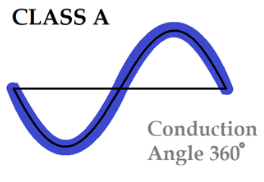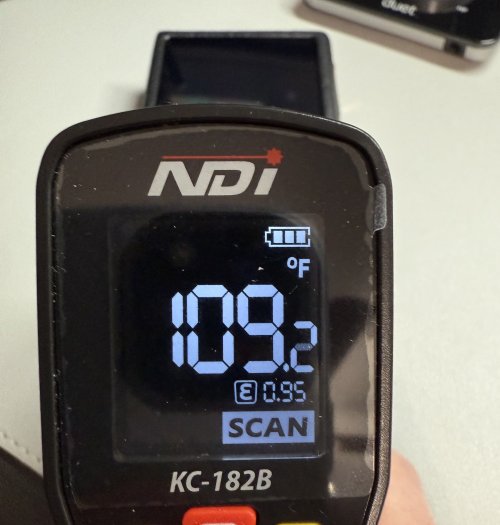"In the past, both of the E series Audio Motherboards were renowned for their excellent headphone amplification capability and each Audio Motherboard only had one phone output socket. In this round, although we are still focused on headphone amplification, E203 comes with two output sockets, namely, 3.5mm and 4.4mm PO."
So how did we put two inside E203?
Thanks to the increased PCB space (as Andy mentioned earlier)
The Gen2 Audio Motherboard is not backward compatible with the first generation N6ii Audio Motherboards. To accommodate the audio technologies we have mastered in the past 5 years, we need to use a larger PCB in the new generation Audio Motherboard. This is like playing a zero-sum game: when we increase the PCB, we need to make the DAP bigger, and then it becomes less portable. After a lengthy industrial design process, we finalized the N6iii physical design and increased the PCB area by 30.9%. The added space will allow us to push the envelope, from "unlimited possibilities" to "nothing is impossible".
We were able to integrate both optimized 3.5mm and 4.4mm phone circuits onto a single motherboard. This is one of the
key advancements of the E203 — while it still achieves the highest standard in PO performance, now you can enjoy both 4.4mm and 3.5mm outputs on a single audio motherboard.
The E203 Audio Motherboard is designed to meet the demands of discerning users who value both innovation and uncompromising headphone output (PO) capability.
Architecture of E203
DAC: Polishing the ES9039SPRO
The E203 Audio Motherboard is designed around the ESS flagship 32-bits ES9039SPro DAC chip, which is acclaimed for its ultra-high dynamic range, low distortion and brand new HyperStream® IV Architecture, it's very different from its predecessors, say, 9018, 9028, 9038 and their variants.
Of course, having a great DAC chip doesn't essentially or automatically guarantee great sound. The chip itself is like a piece of jade — if it’s not because the careful polishing, it’s essentially nothing but a stone. And the DAC chip is just like a jade, it needs to be "polished" to bring out its full potential. Audio is far more than slapping the ‘best’ or most expensive components together, it's about fine-tuning and optimizing the entire circuit to make sure every part works together to deliver 1+1>2 performance.
Picture: DAC Architecture of E203
To achieve this level of performance, we've engineered a
Customized E-DAC Architecture to bring out ES9039SPRO's full potential.
·I/V (Current to Voltage) Conversion Circuit
The first stage is the I/V Conversion Stage, this stage incorporates 8 dual bipolar audio-grade operational amplifiers, creating a benchmark-setting DAC output pathway.
The reason behind this design choice lies in the fact that, as mentioned earlier, the ES9039SPRO operates in C
urrent Output Mode, with an 8-channel independent current output path. To align with this architecture, a corresponding 8-channel independent I/V (Current-to-Voltage) conversion circuit is required. This is followed by an LPF (Low-Pass Filter) and Buffer circuit, of which play a significant role in
shaping the sound signature of the E203.
·LPF (Low-Pass Filter) and Buffer Circuit
As mentioned earlier, the
LPF and
Buffer circuits play a significant role in shaping the sound of this generation’s Hyperstream IV chip. This is because the
ES9039SPRO's peripheral circuit structure and application are vastly different from previous ESS chips. By carefully adjusting its peripheral circuit, for example, adding an extra layer of filter, as well as a Buffer stage, we can fine-tune the sound signature of the ES9039SPRO, to the point where it can produce a sound that is, in many ways, remarkably different from the
typical ESS SABRE sound. (We'll talk about this later)
DAO+H (Dual Amplifier Operation+Hyper)
The last thing that worth mentioning is the
DAO+H setting.
Building on the success of our Dual Amplifier Operation (DAO) technology, which was previously introduced with the E01 Audio Motherboard for the N6ii DAP (December 2019), the E203 takes amplification versatility to the next level:
DAO allows you to switch between two distinct modes —
Class A, known for its smooth warmth; and
Class AB, offering better dynamic; and
Hyper, offering you Cayin’s magic. The choice is all yours!
And speak of
Hyper Mode, let me introduce this function to those new-comers: the Hyper Mode was first introduced with our N30LE anniversary DAP, Hyper Mode takes the performance to the highest level by prioritizing audio output above all else. In this mode, we fine-tune the operating voltage, static current, and gain to enhance audio performance, delivering an alternative sound signature with a more powerful output. However, it's worth noting that the Hyper Mode delivers peak performance at the cost of higher temperatures and reduced battery life.

























 . Thanks.
. Thanks.








